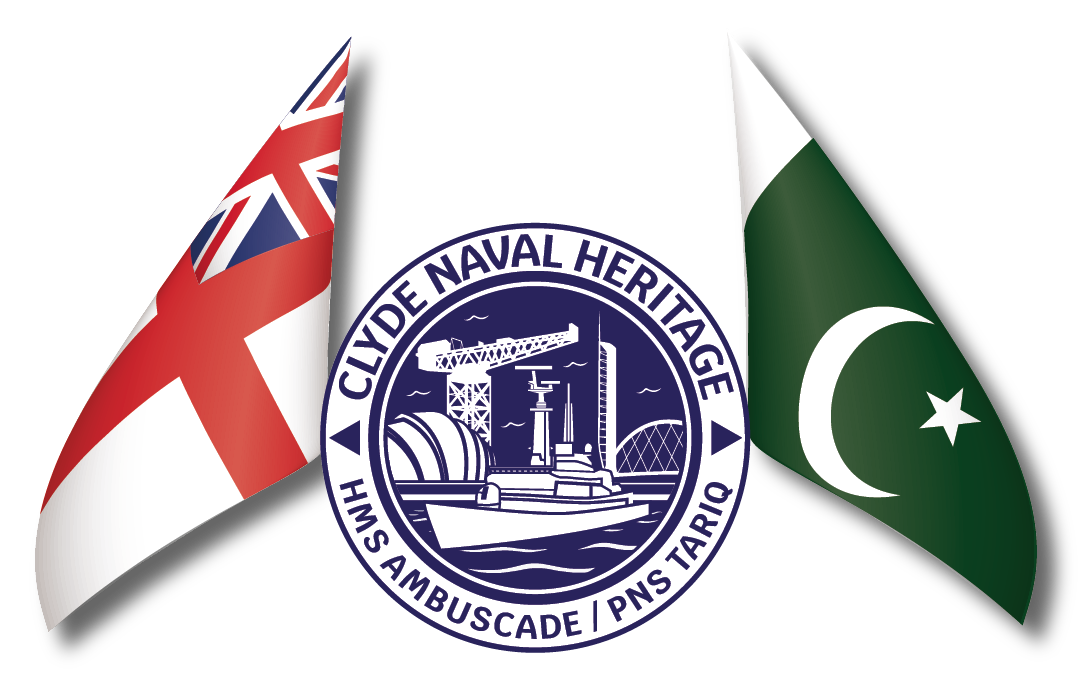I am heading up to Glasgow to view both the proposed temporary museum and berthing site for the former HMS AMBUSCADE and the dry dock which has already been offered into which she will finally reside as a museum ship. She will be the only remaining Cold War veteran and the only Falkland War veteran of the Royal Navy to be preserved.
The Type 21 frigate HMS AMBUSCADE holds a very special place in my heart. I had completed much of my officer training in two of her sister ships, ARROW and ALACRITY. AMBUSCADE was my first ship as a qualified naval officer. This was a stroke of luck as one of my duties was damage control officer. My training in Type 21’s gave me ‘whole-ship’ awareness and familiarity with every compartment, having worked with all departments while under training. It was in AMBUSCADE that I had much luck gaining a strong reputation with superiors outside the ship and two commendations.
She had an amazing captain in my time, John Harvey, who remains a good friend. The ship’s company were also very special and it is a pleasure to remain in touch with so many of them.
The ‘greyhounds of the seas’ or ‘boy commander’s Porches’ as the Type 21 frigates were known, had beautiful sleek lines and terrific acceleration and de-acceleration. Their Olympus Gas turbines gave them great speed. They were highly manoeuverable.
Armed with the very accurate 4.5 inch gun, Exocet (fitted later), Corvus chaff launchers, STWS torpedo system, general purpose machine guns, a Wasp helicopter later replaced by the Lynx, they were capable though lightly armed general purpose frigates and the first ships to be commercially designed and built for the Royal Navy. The ships also carried the SeaCat missile system for close-in air defence; although this description is not entirely valid as the operator would not acquire control of the missile until it was 500 meters away after launch. SeaCat was conceived of in the late 1940s and designed in the 1950s. Fitted in RN ships from 1962 the system was technically obsolete by the time they were built but had a remarkably good innings during the Falklands War, often outperforming the much more modern SeaWolf system. This was achieved not because of amazing accuracy but because the approaching missile emitted so much smoke and flame it scared the hell out of Argentinian pilots. This was because it was powered by a two stage rocket system and had flares on its rear end so the manual operator could see it and control it.
Her distinguished record with the Royal Navy ended in 1993 when she was sold to the Pakistani Navy. She was first of the remaining ships of the class Under the command of an extraordinarily gifted officer, Captain Muhammad Anwar, who later commanded the Tariq class squadron as a Commodore, she underwent conversion and training with the RN; transforming the relationships between our navies and nations. She also transformed the capability, professionalism and esteem in which Pakistan’s navy is held internationally.
She was renamed TARIQ. To most of us the name means little but to Muslims it resonates strongly. The name translates from Arabic as ‘bright star’ or ‘morning star’. But it is also a name of great historical significance and cultural importance both in the Arab and South East Asian regions and in the Iberian peninsula. Much of Spanish and Portuguese culture and its architecture reflects the impact of Tariq ibn Ziyad (Arabic: طارق بن زياد Ṭāriq ibn Ziyād c. 670 – c. 720). Tariq was the Umayyad commander who initiated the conquest of Visigothic Hispania (now Spain and Portugal) in 711–718 AD. This freed slave, who converted to Islam, was from what is now Algeria.
Tariq was to serve her new country for 30 years and finally retired from service having given 50 years of operational service to two nations. The Pakistan Navy kept her incredibly well. She is in excellent condition.
Last year Tariq was gifted by Pakistan to the charity Clyde Naval Heritage and we hope to have her placed on a lift ship and brought to the city where she was built once the current troubles of piracy and drone attacks in the area of passage make that possible.
Once home she will be the centre piece of the museum as well offering Sea Cadets and other youth groups the opportunity to sleep onboard and experience life in a warship.
But AMBUSCADE/TARIQ will do far more than being a museum piece and youth training facility. She will become home to the Naval Regional Commander. She will be an exciting venue for weddings, corporate events and dinners whether in the wardroom or the more intimate space of the Captain’s cabin. She will provide business facilities for start up businesses; especially those from the South East Asian community. She will revitalise a rather deprived area of the city.
For me, one of the most exciting prospects will be the focus point she provides for the large Pakistani community in Glasgow and also for the wider Muslim community. This brings together people from communities too often divided. It enables us all to learn from one another and to see the many things which unite our communities within the steel walls of the ship which did so much to do just that operationally and politically uniting our two nations.
Of course all this won’t happen without donations and sponsorship. Watch out for our campaigns.
Commodore Duncan Lustig-Prean

